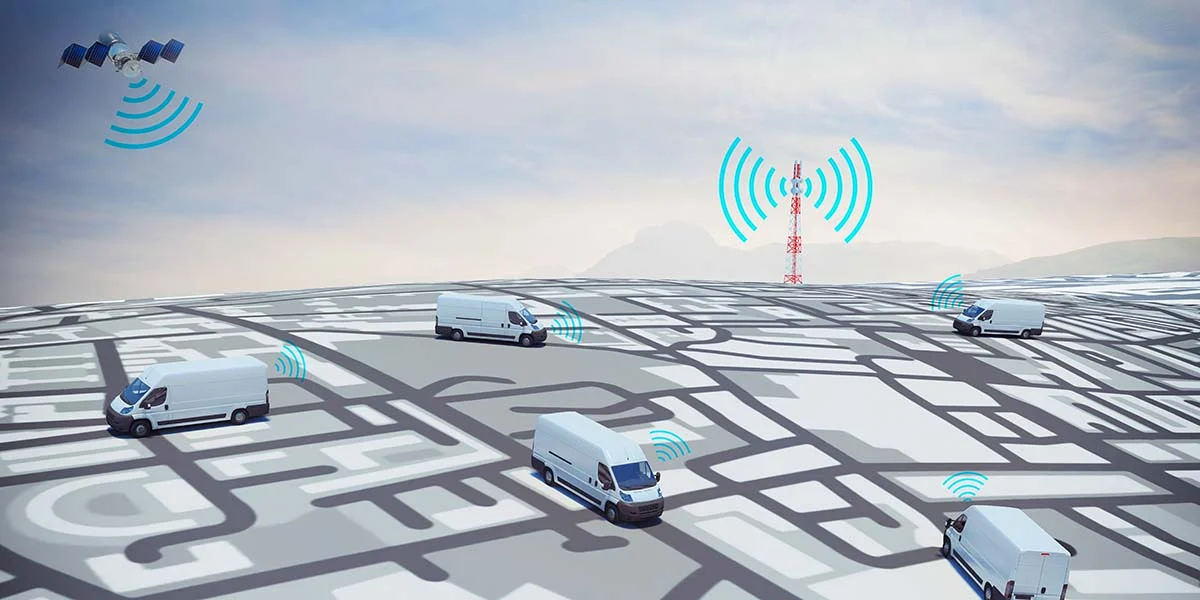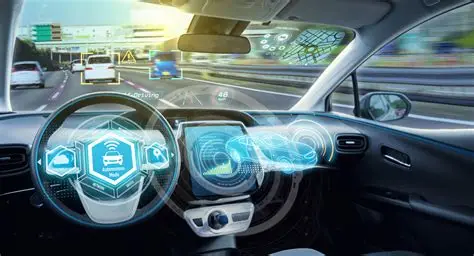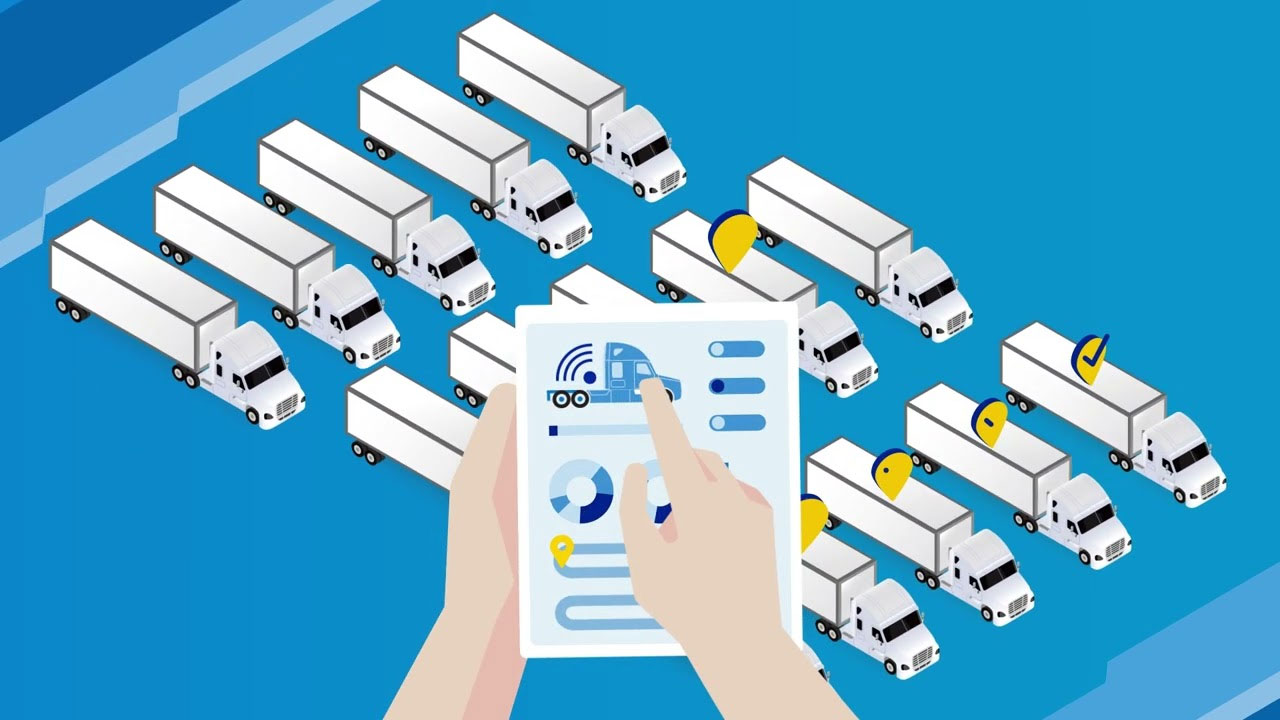Telematics & ADAS: The Future of Fleet Safety and Driver Assistance
Aug 17, 2025 Resolute Dynamics
Fleet safety has come a long way. Gone are the days when managing a fleet just meant tracking mileage and checking fuel receipts. Today, with road traffic getting denser and logistics under constant pressure, safety has become a top priority. That’s where connected vehicle technologies step in—especially Telematics and Advanced Driver Assistance Systems (ADAS).
Both are powerful on their own, but together? They’re changing everything.
What Is Telematics?

Telematics is the digital nervous system of modern fleets. At its core, it’s a technology that blends telecommunications and informatics to monitor, manage, and improve how vehicles move and behave. It’s not just about knowing where a truck is—it’s about knowing how it’s being driven, why fuel is being wasted, and when something might break down.
In simple terms, telematics collects real-time data from vehicles, sends that data through wireless networks, and displays it on easy-to-use dashboards. This allows fleet managers to make smarter decisions that keep drivers safer, vehicles healthier, and operations more efficient.
Key Functions of Telematics:
-
Real-time vehicle location tracking using GPS
-
Monitoring driver behavior: harsh braking, acceleration, and cornering
-
Tracking engine diagnostics and fault codes
-
Managing fuel consumption and idling
-
Sending alerts for preventive maintenance
-
Measuring carbon emissions and sustainability metrics
-
Creating electronic driver logs for compliance (like ELDs in the US)
It’s like turning every vehicle into a rolling data center.
How Does Telematics Work?
Each vehicle is equipped with a telematics control unit (TCU) or a small hardware device plugged into the OBD-II port or connected via the CAN bus. This unit gathers data from the engine, transmission, brakes, and GPS.
The information is then transmitted—using cellular networks (like 4G/5G) or even satellite communication—to cloud-based fleet management software. From there, it’s organized into dashboards, maps, and reports.
So, instead of waiting for drivers to report a problem, I can see everything live:
-
If someone is speeding in a school zone
-
If a tire pressure warning just came on
-
If a delivery van is idling for 25 minutes at a warehouse dock
That’s not just information—it’s situational awareness.
Core Components of a Telematics System
Let’s break down what makes it all possible:
GPS Receiver
Tracks vehicle location in real-time and stores historical route data.
Engine Interface
Connects to the vehicle’s CAN (Controller Area Network) to extract engine data, speed, RPM, temperature, and diagnostic trouble codes (DTCs).
Wireless Data Transmitter
Usually a cellular modem with a SIM card that sends data to the cloud. Some systems also use satellite modems in remote areas.
Sensors & Peripherals
Optional add-ons like temperature sensors for cold-chain logistics, door open/close sensors, or in-cabin video systems.
Cloud-Based Software Platform
This is the fleet manager’s command center—where everything comes together. It includes live maps, geofencing tools, reports, driver scorecards, and integration with ERP or TMS (Transportation Management Systems).
Why Is Telematics So Important?
When running a fleet, it’s not enough to just “track” trucks. You need to optimize performance, reduce costs, and improve safety—and that’s exactly what telematics helps with.
✔ Improved Driver Safety
Telematics helps spot risky habits early—like speeding, hard braking, or aggressive turns. With this data, fleet managers can coach drivers or trigger real-time alerts for immediate correction.
✔ Fuel & Cost Reduction
By monitoring idling, route efficiency, and driver behavior, companies can cut down on fuel waste, which is one of the biggest expenses in fleet operations.
✔ Regulatory Compliance
Telematics systems help comply with regulations like:
-
ELD (Electronic Logging Device) mandates in North America
-
AETR driving hours in Europe
-
Environmental standards for emissions tracking
✔ Predictive Maintenance
Instead of waiting for breakdowns, telematics can trigger alerts for oil changes, brake wear, or abnormal engine behavior. This reduces vehicle downtime and saves thousands in repair costs.
✔ Environmental Impact
Tracking CO₂ emissions, fuel burn, and eco-driving behaviors helps fleets improve their sustainability footprint. This matters for both corporate ESG goals and regulatory audits.
Real-World Example
Let’s say I run a delivery fleet with 150 vans across a city. Telematics shows me that 30 of them idle for more than 45 minutes per day in loading zones. That translates to extra fuel costs, increased emissions, and unnecessary wear on engines.
With that data, I can coach drivers, adjust routes, and maybe even reschedule loading times. That’s not just saving money—it’s making my entire operation smarter.
Understanding Advanced Driver Assistance Systems (ADAS)

Advanced Driver Assistance Systems (ADAS) are intelligent technologies built into vehicles to improve safety, reduce accidents, and support drivers on the road. Think of ADAS as a digital co-driver—one that never blinks, never gets tired, and can process dangers faster than any human can.
These systems use a blend of sensors, artificial intelligence, and real-time vehicle data to predict, prevent, and even respond to dangerous situations. Their main job is to reduce human error, which is the cause of over 90% of road accidents globally.
How ADAS Works: Eyes and Brain of the Vehicle
ADAS systems rely on a combination of hardware and software to interpret what’s happening around the vehicle. Here’s what they use:
Cameras
Mounted on the windshield, mirrors, grille, and rear bumper—these capture lane markings, road signs, pedestrians, and vehicles.
Radar
Short- and long-range radar sensors detect the speed and distance of objects—like the car in front of you or a cyclist nearby.
LiDAR (Light Detection and Ranging)
Though less common in consumer fleets, LiDAR creates 3D maps of the environment using laser pulses. It’s extremely accurate, especially in poor light conditions.
Ultrasonic Sensors
These are often used for low-speed maneuvers, such as parking or detecting objects close to the vehicle.
AI and Sensor Fusion Software
The real magic happens when data from all these sensors is combined and interpreted by machine learning algorithms. The system decides when to alert the driver or take action—like steering or braking.
Key ADAS Features Explained
ADAS isn’t one single technology. It’s a suite of systems that work together. Here are the most commonly deployed features in fleet vehicles:
Lane Departure Warning (LDW)
Detects when a vehicle drifts out of its lane without signaling. The system will beep or vibrate the steering wheel to alert the driver.
Forward Collision Alert (FCA)
Warns the driver if a collision with the vehicle ahead is likely. If the driver doesn’t react in time, some systems will auto-brake.
Blind Spot Detection (BSD)
Uses side-mounted radar sensors to detect vehicles in adjacent lanes. If a driver signals a lane change while a vehicle is in the blind spot, a warning light flashes.
Adaptive Cruise Control (ACC)
Maintains a safe distance from the vehicle ahead by automatically adjusting speed. Perfect for long highway drives.
Automatic Emergency Braking (AEB)
When a collision is unavoidable, this system applies the brakes without driver input to reduce severity or avoid the crash.
Real-Life Example: How ADAS Saves Lives
Imagine this: A delivery truck is cruising down a freeway. The driver, distracted by a mobile notification, doesn’t notice that traffic ahead has stopped suddenly. In milliseconds:
-
Forward Collision Alert detects rapid closing distance.
-
ADAS warns the driver with a loud beep and dashboard flash.
-
Automatic Emergency Braking kicks in when the driver doesn’t respond.
-
The truck slows just in time to avoid a rear-end crash.
This isn’t science fiction. It’s happening every day on roads all over the world.
Why ADAS Matters for Fleet Safety
For fleets, especially commercial or logistics operations, every accident avoided is not just a life saved—it’s also thousands of dollars preserved in insurance claims, repairs, and downtime.
Reduction in Rear-End Collisions
Rear-end crashes are among the most common fleet accidents. AEB and FCA systems dramatically reduce their frequency.
Lower Insurance Premiums
Many insurers now offer discounts to fleets equipped with ADAS, recognizing the reduction in risk.
Legal and Compliance Benefits
As global transport safety regulations evolve, ADAS is quickly moving from optional to mandatory—especially in the EU (under GSR 2) and parts of Asia.
Pedestrian & Cyclist Protection
ADAS systems can detect vulnerable road users in urban environments, automatically braking or steering away to avoid tragedy.
ADAS in the Real World of Fleets
Leading fleet safety solutions—like those from Resolute Dynamics—go beyond basic alerts. They integrate computer vision, deep learning models, and edge AI processing to deliver proactive safety.
These systems don’t just warn—they analyze driver behavior, predict risks, and communicate with fleet managers in real time.
Benefits for Fleet Operators

There’s a clear business case for combining telematics with ADAS. Here’s how it helps:
1. Accident Reduction
-
Proactive warnings and emergency interventions prevent crashes.
-
Fewer incidents = lower insurance premiums and downtime.
2. Driver Behavior Improvement
-
Instant feedback helps coach safer driving habits.
-
Safety scores motivate drivers to improve.
3. Lower Operational Costs
-
Optimized routes and reduced fuel waste.
-
Fewer breakdowns thanks to preventive alerts.
4. Regulatory Compliance
-
Telematics helps log Hours of Service (HOS), driver logs, and compliance reports.
-
ADAS helps meet upcoming safety regulations and insurance requirements.
5. Better Insurance Negotiation
-
With detailed data and fewer claims, insurers see the fleet as low-risk.
Global Reach, Local Impact: How Resolute Dynamics Leads the Innovation

In this space, Resolute Dynamics stands out. Their platform is built around three powerful pillars: Capture, Connect, and Control.
-
Capture: AI-powered vision systems gather real-time driving data and environmental context.
-
Connect: Telematics units transmit and unify data from every vehicle, creating a living fleet map.
-
Control: Intelligent systems intervene when needed—like applying speed limiters or collision avoidance.
With over 200,000 vehicles deployed across MENA, Asia, and beyond, they’re leading the charge toward safer roads using AI, edge computing, and integrated control systems.
Future of Connected Fleet Safety

Where is all this heading? Here are a few trends on the horizon:
1. Vehicle-to-Everything (V2X)
-
Cars talking to each other, traffic lights, and infrastructure in real time.
2. AI-Powered Predictive Safety
-
Machine learning algorithms that learn from every trip and adjust behavior dynamically.
3. Autonomous Fleet Integration
-
As Level 3–5 autonomy becomes real, ADAS will act as the transitional tech.
4. Regulatory Push
-
Governments are moving toward mandatory ADAS in commercial vehicles.
5. Driverless Safety Management
-
Even autonomous vehicles need oversight. Telematics will be that “eye in the cloud.”
Conclusion: A Safer, Smarter Road Ahead
Fleets today face more pressure than ever—from rising fuel costs to tighter delivery windows. But the biggest risk? Safety. That’s why the combo of telematics and ADAS isn’t just nice to have—it’s mission-critical.
This isn’t the future anymore. It’s happening now. The fleets that embrace this tech will be safer, smarter, and ready for whatever the road throws their way.